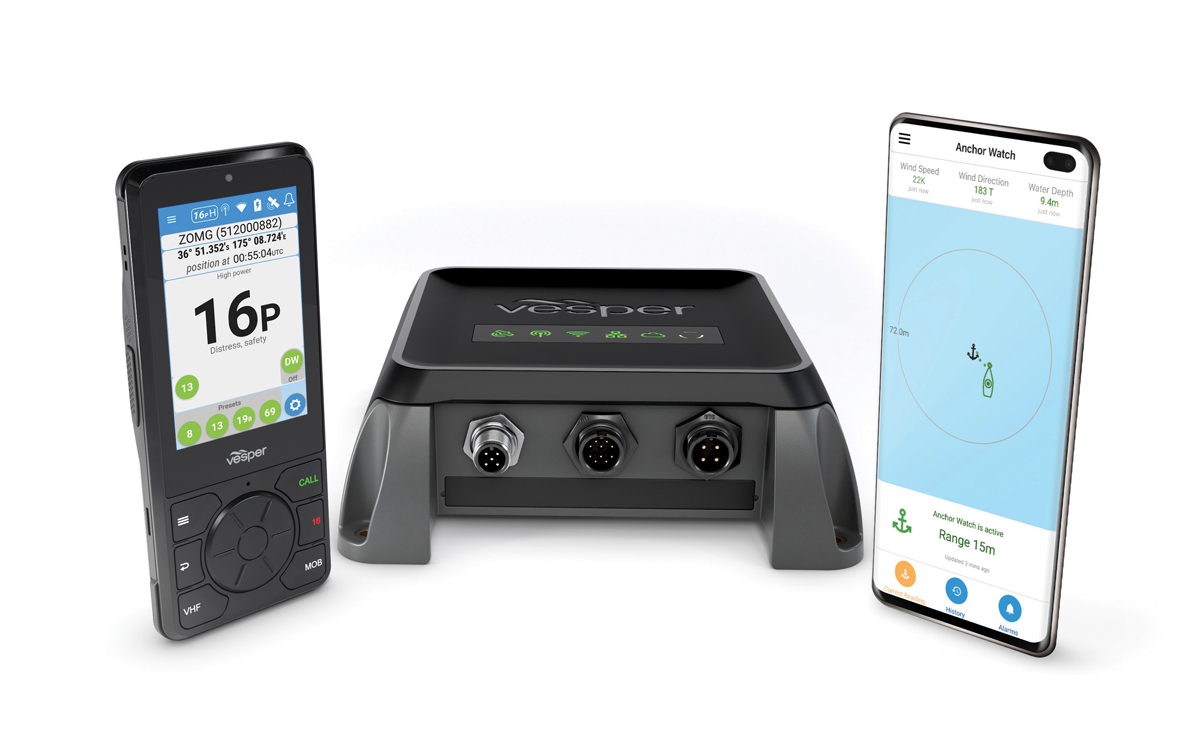Vesper Marine’s clever new Cortex system hopes to do for the VHF radio what the iPhone did for mobile phones
It has taken its time coming but electronics specialist Vesper Marine has launched what it hopes will become the iPhone of VHFs. Called Cortex, it’s a brand new wireless touchscreen handset that combines a state-of-the-art VHF radio with the latest AIS transponder and a remote vessel monitoring system.
Not only does this remove the need for three separate pieces of equipment, but it links all three together for a smarter, simpler, more intuitive user experience.
Perhaps the best example of this is its ability to spot a potential collision risk, put all the crucial information at your fingertips, then allow you to either call the other vessel directly or try out various course alterations before deciding what action to take.
Carl Omundsen, Vesper Marine’s chief technical officer says: “Cortex unleashes the full potential of VHF, AIS and DSC by combining them in a way that is both intuitive and super easy to use”.

The heart of the system is a black box base station equipped with a powerful fixed VHF transceiver, an AIS transponder, a cellular data transmitter and a bespoke wireless communications protocol that gives a more robust connection than conventional Bluetooth technology.
This links the black box to up to ten different handsets around the boat, ensuring total connectivity and control from anywhere on board. The handsets are waterproof to IPX7 and fitted with 4in Gorilla Glass touchscreens, which can be operated with wet fingers or gloves. Wired and wireless rechargeable handsets are available, the latter having a battery life of at least 12 hours, although they both communicate with the base station wirelessly.
Vesper Marine’s Class B SOTDMA AIS transponder monitors all other AIS traffic in the vicinity and alerts the skipper to any potentially hazardous situations with a voiced explanation of the problem rather than a generic warning tone. The information is simultaneously displayed on the handset’s screen with a visual representation of the danger boat highlighted in red, its name, current range and closest point of approach.
Article continues below…

AIS B+ explained: How to see and be seen on the water

Raymarine DockSense: Virtual fender makes this boat uncrashable
So far so normal but, unlike other AIS systems, it also displays a ‘call target’ button that allows you to communicate directly with the boat in question using the VHF’s DSC function rather than an open channel.
This ability to instantly identify another boat and dial its nine-figure MMSI number simply by touching the vessel on screen and pressing the call button is a potential game-changer, not just for safety related issues but for day-to-day communication with other boats.
Most leisure boat owners rarely use their VHF’s DSC function due to the hassle of identifying, saving or dialling these lengthy MMSI numbers, so instead they end up making contact on the emergency Channel 16 then switching to another more appropriate open channel.

No need to dial the MMSI number, just hit ‘Call Target’
Cortex makes using DSC as intuitive as the contacts list on a smartphone. In fact, it’s even easier than that because you don’t need to know the other boat’s MMSI number in advance — so long as it’s within AIS range it will automatically know what number to dial. This will not only make for clearer, more direct communication between boats but also free up Channel 16 for genuine emergency situations.
Other more familiar functions include an MOB (Man Over Board) button that marks a waypoint on your plotter using its NMEA 2000 link and then activates a trackback mode, and a one-touch DSC distress button protected by a flip cover.
The other big advantage of the Cortex system is its ability to communicate with smartphones using cellular transmissions. Vesper has already developed a Cortex Monitor app for both iOS and Android operating systems that allows users to monitor a number of built-in sensors and other NMEA functions even when ashore.

Anchor watch function shows your anchor and boat position, depth and chosen safe perimeter. If the anchor drags and the boat drifts beyond the safe zone it sounds an alert on the handset. All alarms say exactly what the problem is and are sent to linked smart phones via the app
These include battery power, GPS location, wind strength, depth, bilge and temperature. Perhaps the most valuable of these is a built-in anchor watch function that allows users to set a virtual perimeter around the boat that sends an alert to their mobile phone if the anchor drags, the depth drops below a certain level or the wind speed or direction changes.
The black box base station costs €1,249 or €1,729 with a single wired handset. Rechargeable handsets are available for €589 each. The price includes a basic monitoring facility that sends position and sensor updates to the free app twice a day, while the premium monitoring service sends updates every five minutes for €20 a month or €120 for the year.
First published in the December 2019 edition of Motor Boat & Yachting.









